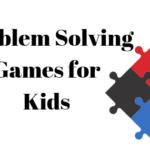Up until recently, I was a firm advocate of an-hour-a-day regimen for gaming. And that too, only after they’ve completed their homework. The fear that an uncontrolled appetite would undoubtedly take my children on the road to laziness, obesity, and interfere with academic studies made me very vigilant of their habits.
While I’m sure that a fair number of mothers may be nodding their heads in agreement right now, I’ll be the first to admit that this may not be necessarily true.
Yeah, parents can make mistakes too! (gasp!!)
I have come to realize that there is much to be gained from gaming. And you’ll be surprised to learn that according to Medical News Today, 71 percent of parents agree that video games have a positive influence on their child’s life.
Now it may seem like I’m giving in to my kids’ demands to some parents. But in reality, a little compromise on my part has become a win-win situation. So I’m focusing on the bigger picture. I know that game-based learning can really help my children by providing a safe and healthy environment for my kids to learn in.
How so, you may ask.
To be honest, I’ve done some research. Here is what I found.
You must understand that gaming is a broad topic. Though several aspects may harm your child’s development, they can be mitigated, especially by exploring all the other avenues that game-based learning has to offer. So don’t be too hasty and overlook opportunities that can, in fact, benefit your child in the long run.
1. The child learns at their own pace
School curriculums typically have a one-size-fits-all approach. They’re created to bring all children up to a certain level in a set amount of time. However, some progress quicker than others and vice versa. This situation puts added stress on those who are a bit slow to catch on. The pressure can, at times, be counterproductive.
To circumvent this scenario, a game-based learning plan can make difficult concepts more fun and presents them in a less threatening way without losing the impact of the core message. Students can focus more on playing and learning challenging skills without being overwhelmed.
2. Places the child in their comfort zone
Game-based learning offers an engaging and safe environment in which a child can freely experiment with new ideas and tactics. There is no fear of making mistakes. Actions can be undone or levels repeated.
Moreover, the child does not feel embarrassed about errors or lagging behind in class. At the end of the day, he is, in fact, competing against himself all the time. And since games are developed on the principle of increasing difficulty progressively, the student gradually masters concepts as he clears through different levels.
3. Bolsters the child’s independence
Children receive immediate and simultaneous feedback, making practice sessions more effective, increasing motivation, and supporting a holistic learning environment. So even when the teacher is not present or close to the child, game elements and drills help enhance necessary skills while developing others with the aid of playful, child-centered learning activities.
But more importantly, a game-based platform creates a virtual environment that resembles familiar and relevant scenarios. This, in itself, jumpstarts the learning experience by connecting games with real-life situations with the fear of any serious repercussions.
4. Your child commits to success
The core concept behind education is to introduce, teach, and strengthen new skills. Game-based learning is built on the same ideology. However, it also uses fun and games to offer a variety of unique teaching methods. While some games focus on repetition, memorization, or role-playing, others utilize failure and success as a source of motivation for learning.
As Melissa Corkum, a parent and wellness coach, clearly points out, a lot of games are aimed at conquering. Regardless of, how you look at it, the child knows that he will have to accomplish a set of goals to finish the game. I mean, have you ever seen a kid quit playing a game just because it’s too hard?
Well, that’s because a child usually has the mindset that he’s just playing a game. How hard can that be? So it’s not surprising that 92 percent of teachers are eager to incorporate game-based learning into their syllabus.
5. Keeps boredom at bay
According to the Entertainment Software Association, 79 percent of gamers find playing games a great way to stimulate the brain. So as long as advancements game-based learning continues, keeping things exciting and exciting, there’s no getting bored here. Without a doubt, this critical aspect offers a plausible solution to one of the biggest challenges that teachers face today- keeping students’ interested, focused, and engaged at all times.
6. Allows kids to select their own adventures
Choosing a game should be as fun as playing itself. So subscription-based gaming platforms such as airG MiniMe 500c are safe and affordable child-oriented game-based learning opportunities. Furthermore, by offering your child a list of applicable games, this not only boosts their confidence as they have the chance to select a game of their choice, but it also offers them the freedom to explore new ones.
7. Keeps parents involved too
As a parent, you need to be onboard 100 percent to ensure that your child continues to learn. Games such as DreamBox Learning K-2 Math offer a dashboard to allow parents to review their child’s’ progress. To keep kids motivated, parents can skip over levels that a child has already mastered.
More importantly, interacting with your child and his favorite games not only helps you to bond with them, but it also lets you see whether there is any unacceptable content. And even though more and more games are coming out with safety features to continue to keep online learning a safe and productive process, you should always be vigilant. Even though parental control features and ad blockers can restrict the content that your child is exposed to, you should play the game just to be sure.
8. Content is up-to-date and interactive
A textbook often takes a year to be compiled and then remains in circulation for several years. On the other hand, technology is an up and coming arena. You’ll see new games being continuously introduced.
Moreover, innovative techniques and strategies are created to teach the same concepts. Game-based learning fosters active learning instead of passive learning. So children learn how to respond appropriately to situations and see the consequences of their actions.
9. Your child is more prepared to embrace the future
The next generation of children is more tech-savvy. In order to meet the latest educational goals, a curriculum that connects, engages and motivates them needs to be developed.
Therefore, with a better understanding of the importance of games in learning, teachers and parents alike are prepared to reconsider the effectiveness of current teaching methodologies and introduce more innovative technologies such as virtual reality. Moreover, it’s a great way to prepare children for the life ahead of them by helping them to develop cognitive skills and enhance knowledge about various topics.
Ready to take learning to the next level?
BBC News reported that industry giants such as Microsoft and Steam saw significant increases in video game sales in the US in over a decade in March 2020. With the spread of COVID-19, parents and teachers will need to adopt new ways of teaching- and fast.
Game-based learning platforms promote enjoyment, involvement, motivation, creativity, and gratification. But above all, the dopamine rush a child receives on clearing a level is enough to radiate enough positive energy into other aspects of their life. And who can pass off the opportunity of having a happy child in your company, especially when everyone is locked indoors? 😉













